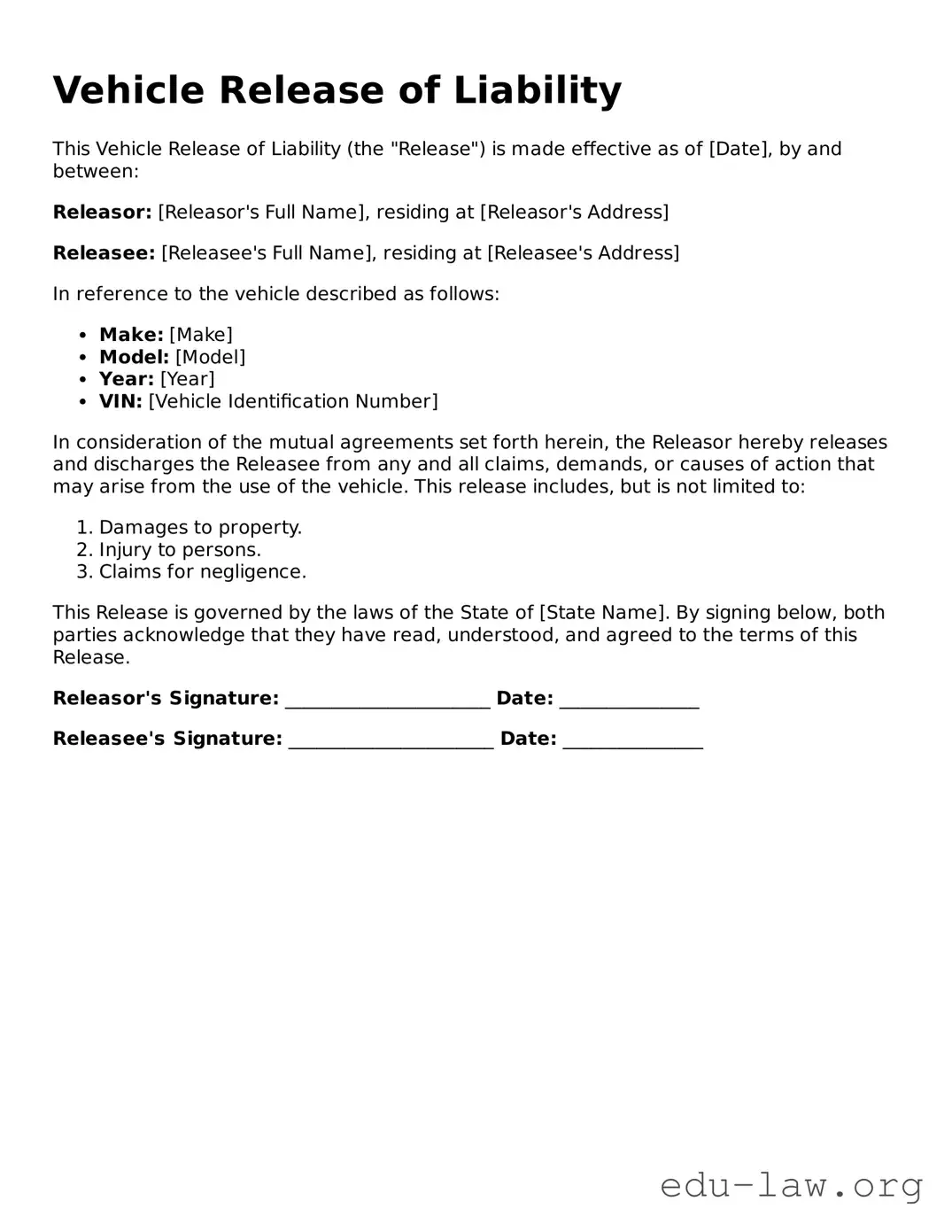What is a Vehicle Release of Liability form?
The Vehicle Release of Liability form is a legal document designed to protect vehicle owners from potential legal claims related to the use of their vehicle. When a vehicle owner allows someone else to borrow their vehicle, this form can help clarify that the vehicle owner will not be held responsible for accidents, damages, or injuries that may occur during the period of use. By signing this form, the driver acknowledges responsibility while using the vehicle, creating a clear record of the agreement between the two parties.
Who should use a Vehicle Release of Liability form?
This form is beneficial for anyone who owns a vehicle and plans to lend it to someone else, whether it's a friend, family member, or colleague. Consider using this form for short-term usage, such as borrowing the car for a day, or even for longer periods, like lending a vehicle for vacations. However, keep in mind that some insurance policies may have specific clauses regarding coverage when a vehicle is lent to someone else, so checking with an insurance provider is wise.
What are the key components of a Vehicle Release of Liability form?
A well-crafted Vehicle Release of Liability form typically includes several essential elements. These include the names and contact information of both the vehicle owner and the driver, a detailed description of the vehicle, the period during which the vehicle is being borrowed, and specific language that clearly outlines the responsibilities of both parties. The form should also include a statement indicating that the driver acknowledges understanding and accepts the terms of liability. Finally, both parties should sign and date the document to confirm their agreement.
Is a Vehicle Release of Liability form legally binding?
While the form is designed to be legally binding, its enforceability can depend on various factors. For instance, it must be executed correctly—that is, both parties must willingly sign the document without any coercion, and the terms should be clear. Additionally, some jurisdictions may have specific requirements regarding liability waivers, so it's important to research local laws. Although this form can provide an extra layer of protection, it does not eliminate risk entirely. Individuals are advised to consult a legal professional to ensure the form meets all necessary legal standards.
Can a Vehicle Release of Liability form prevent all legal claims?
The short answer is no; this form cannot prevent all legal claims. While it helps clarify expectations and assigns liability, certain circumstances may still lead to legal action. For example, if there is gross negligence on the part of the vehicle owner or if the vehicle is not properly maintained, claims may still arise. Furthermore, specific claims involving accidents, damages, or injuries may be governed by state law, which could limit the effectiveness of the form. Therefore, it's prudent for vehicle owners to evaluate risks and consider other protective measures, including insurance, alongside using this form.
